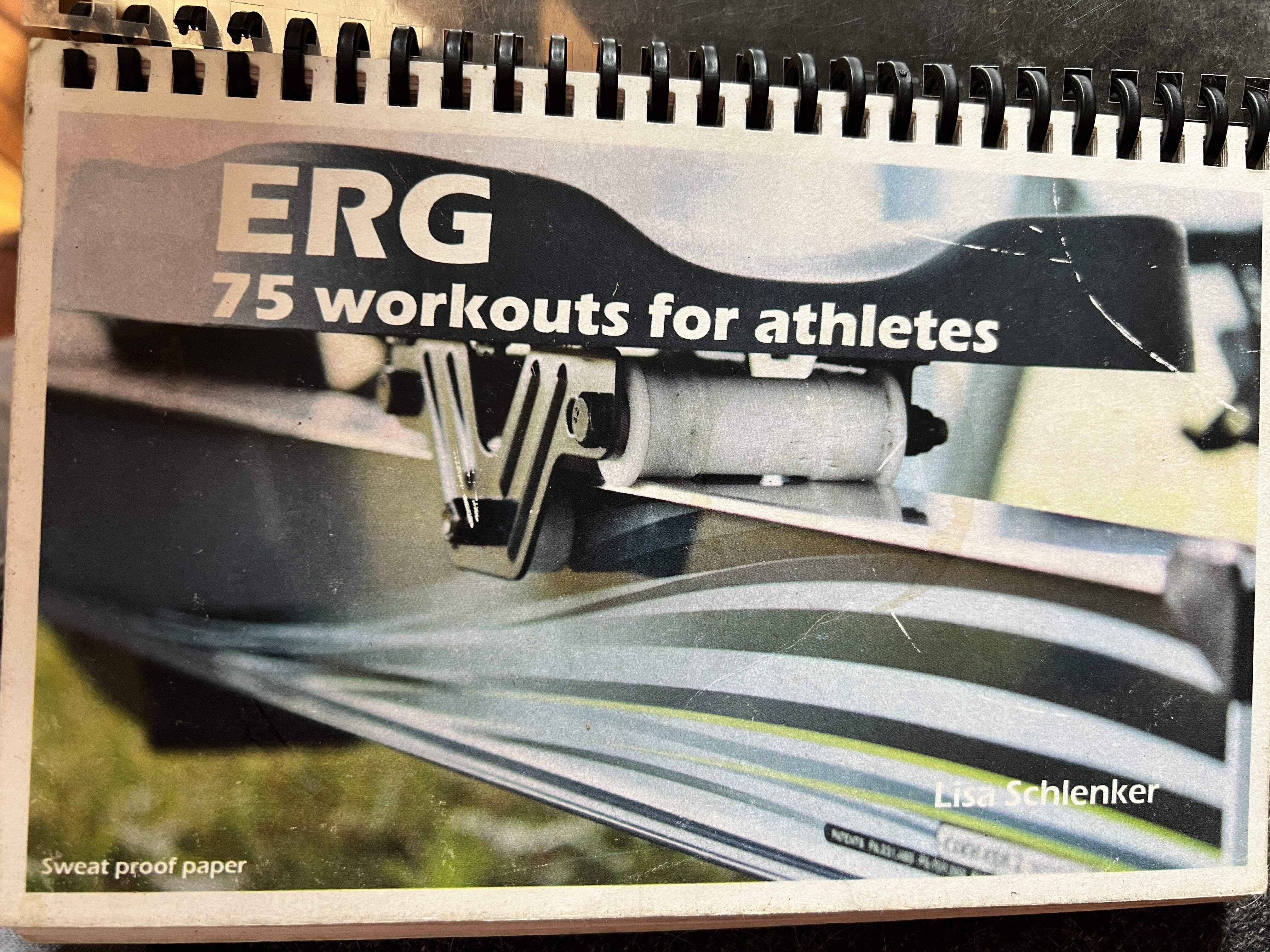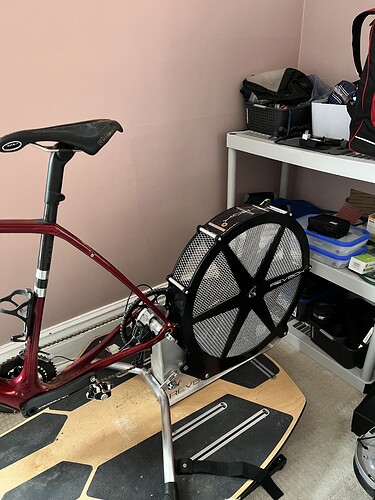So are you comparing riding at higher cadence to increase heart rate similar to the airdyne and moving more of your body?
Just looking at ways to drive increased venous return to the heart.
Both formats will increase venous return to the heart.
I believe that the Air-dyne will be more effective at this.
I will let you tackle this project and come back to me.
Do you have access to an airdyne?
Cycling cadence alters exercise hemodynamics - PubMed (nih.gov)
“It was hypothesized that increased pedal cadence would enhance the skeletal muscle pump, resulting in elevation of cardiac output. Seven cyclists were enlisted to cycle at 200 watts at pedal cadences of 70, 90 and 110 rpm”
“Apparently, even though the workload was constant, the increase in pedal cadence resulted in a more effective skeletal-muscle pump which increased muscle blood flow and venous return.”
One thing I have noticed in athletes is this.
The level of intensity to improve high end respiration and achieve high heart rates on a bicycle, irrelevant of cadence has a much higher cost than doing the same work on an airdyne.
I am not talking about world class athletes, I am talking about many regular but quite good athletes.
If you can improve the cardio and respiratory system of an athlete, with less localized fatigue I believe you can transfer that to the bike when done correctly and have better luck avoiding overtraining with this type of intensity.
The other thing is that when you have someone so used to riding and they attach a certain feeling to the hard work on a bicycle - sometimes the switch in device can really help them break through.
Anyone can jump on an airdyne and just go, but xc skiing, rowing, even running hard require technique and have risk to injury.
So as a tool I have found it very useful.
Totally makes sense and we have seen this for years, which is why most hard intervals from many would have a cadence description likely 100 plus, and often focus on keeping the cadence and effort high, over power. Really what a hard start interval is very similar to.
I can get access to an airdyne.
But still haven’t acquired a MetCart…
I’m happy to suffer through some intervals, with Moxy and lactate, for the greater good!
Haha…that would be great.
I never really use the moxy to look at some of the things you are looking at.
Most of my work with high intensity is more on the coaching side.
Trying different intervals to see what worked, not necessarily why they would work always.
So after looking at different durations of intervals with athletes, I then tried different modalities. I found the airdyne was the easiest if people didn’t have a big athletic background.
It would great to get some feedback from you about trying the different intervals on the bike and airdyne.
There’s also a study out there that looked at vo2 max intervals and modality (running and cycling). I will find it and post. My recollection is the modality didn’t matter.
Both groups significantly improved TM VO2max (P < 0.05), CE VO2peak (P < 0.01), and 5000-m (P < 0.01) and 1609-m (P < 0.05) run times with no significant differences between the groups. The TM VO2max pre/post values were 55.3 +/- 3.0 to 58.2 +/- 3.0 and 55.6 +/- 3.8 to 58.9 +/- 2.4 ml.kg-1.min-1 for the run group and cross-trained group, respectively. Posttraining submaximal treadmill running showed statistically significant pace increases of 18.7 (run) and 16.1 (cycle/run) m.min-1 with similar heart rate, blood lactate, and RQ values as pretraining. Results indicate that 5 wk of either mode of training can significantly improve aerobic capacity and run performance.
Yeah - Kolie Moore’s podcast on VO2 Max makes it clear his focus is maximal (as even as you can muster) effort with maximal cadence. Power is secondary. This makes sense if you are focused on central adaptations, but I know I hadn’t thought about it this way until I heard him…then I felt stupid.
None of us should ever feel stupid, we all just learn the same thing at different times.
I love learning new things I have never even thought about.
Yeah this seems right. High cadence and loads of muscles involved. I am looking for a used one now…
@steveneal are there specific models you recommend? It looks like some newer ones use belt drive? Thanks!
Don’t get too excited about high cadence right off the start! At max effort you likely won’t be over 80 rpm in the beginning BUT you will be GUARANTEED loads of muscles involved, and also buy a bucket.
Do not buy one with a small front fan you will be very dissapointed there just won’t be enough resistance.
never used below, but I believe the computer might be better to program and have more data.
You will suffer equally on both.
I would just read some reviews but might lean towards the rogue machine, but I have never had an issue with airdyne in over ten years, had 10 at the cycling gym for 7 years used daily plus my own at home.
The other device I really like and use a lot for myself (and a few track athletes I worked with loved the feeling of this when going hard, always said it was as close to a sprint sensation they have had on a trainer).
Revbox - the reviews or videos I have seen don’t do it justice based on the way they setup. I use a saris platform and it is an amazing combo for hard work and due to the exponential resistance in the fan (which is what also makes the airbikes excellent) is that you have to really fine tune high pacing or you will blow up. So it takes a bit of practice but I find better for all around improvement of your cycling rather than just hard intervals on a trainer.
The fan resistance is really noticeable in your pedal stroke if you are smooth or not, instant feedback to your body as to how you apply pressure to the pedals.
Yeah - these are the two I was looking at too. RevBox looks cool but pricey. I’ve broached the topic on the family SMS thread. No response. We’ll see…
Beautiful writing.
The paradox of rowing is that this most physically demanding of sports is about eighty per cent mental, and the higher you rise in the sport the more important mental toughness becomes. Rowers have to face the grim consequences of starting a two-thousand-metre race with a sprint–a strategy no runner, swimmer, cyclist, or cross-country skier would consider using in a middle-distance event. Since rowers race with their backs to the finish line, the psychological advantage of being ahead in the race–where you can see your opponents but they can’t see you–is greater than the physiological disadvantage of stressing the body severely so early in the race. If you get behind, something like “unswing” can happen: the cumulative effect of the group’s discouragement can make the individuals less inspired. Therefore, virtually every crew rows the first twenty or thirty strokes at around forty-four strokes a minute (which is pretty much flat out) before settling down to around thirty-seven for the body of the race.
As a result of this shock to the system, the rower’s metabolism begins to function anaerobically within the first few seconds of the race. This means that the mitochondria in the muscle cells do not have enough oxygen to produce ATP, which is the source of energy, and start to use glycogen and other compounds stored in the muscle cells instead: they begin, as it were, to feed on themselves. These compounds produce lactic acid, which is a major source of pain. In this toxic environment, capillaries in the hardest-working muscles begin to dilate, while muscles that aren’t working as hard go into a state of ischemia–the blood flow to them partially shuts down. Meanwhile, the level of acid in the blood continues to rise. Mike Shannon, a sports physiologist who works at the new Olympic training center, outside San Diego, told me that the highest levels of lactic acid ever found in athletes–as measured in parts per million in the bloodstream–were found in the blood of oarsmen, about thirty parts per million. “That’s a tremendous amount of pain,” he said.
Marathon runners talk about hitting “the wall” at the twenty-third mile of the race. What rowers confront isn’t a wall; it’s a hole–an abyss of pain, which opens up in the second minute of the race. Large needles are being driven into your thigh muscles, while your forearms seem to be splitting. Then the pain becomes confused and disorganized, not like the windedness of the runner or the leg burn of the biker but an all-over, savage unpleasantness. As you pass the five-hundred-metre mark, with three-quarters of the race still to row, you realize with dread that you are not going to make it to the finish, but at the same time the idea of letting your teammates down by not rowing your hardest is unthinkable. Therefore, you are going to die.
In a sense, all the training you do as an oarsman is to prepare you for this critical moment in the race, which is extremely dramatic, though it doesn’t show up on television. But heavyweight oarsmen are famously laconic by nature, and they almost never talk about pain; it’s a taboo subject. The feeling is that if you talk about pain you might begin to fear it, and the fear will get into your head in funny ways, both in the specific dread of racing and the long-term dread of training, like a psychic version of repetitive-stress injury. When I asked Redgrave about the pain, he said, “What pain? There’s no pain,” as though he didn’t even know what I was talking about.
My wife was part of a 4 time Henley heavyweight as the only lightweight in the boat, she competed over a 5 year time period. They won the Henley I think 3x, there were 3 Olympians in her crew. After she stopped, she made the National Mountain Bike team
in her first mountain bike riding season, during the Alyson Sydor, Chrissy Redden years, some solid world results at the time.
She could suffer.
Anyways…here is a favourite book of mine not sure you have come across this one.
If you finish all the ruhigekraft sessions in the book the author will send you a Tshirt.

Reading these workouts and knowing how a few of my friends who came top ten in World Cup cross country skiing defines effort many could only dream of achieving.
The wonderful reading you posted is amazing, the only sentence that isn’t quite true is the reason for the very hard start in rowing. They have to get the weight of the athetes and the boat as high on the water as possible, as soon as possible, this isn’t required in too many sports at least not to the same level as getting the athletes and the equipment up and moving through the water.
Everything else is way more than true, just the duration of the sport in itself is horrible. Imagine all of races being a CP4 test.
Thanks for posting.
Amazing. Thank you for sharing.
I find this interesting.
Want tô know This approuch results! Pretty much the same here, trying comciliate Ergs /bike /running
